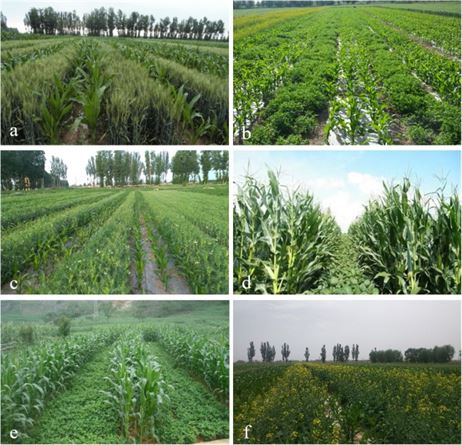Intercropping & Crop Rotation in Nigeria: Boost Yields & Sustainability

Intercropping and crop rotation are time-honored agricultural practices that have been integral to Nigerian farming systems for centuries. These methods not only enhance crop yields but also promote sustainable farming by improving soil fertility and reducing pest and disease incidences. This comprehensive guide delves into the principles, benefits, and implementation strategies of intercropping and crop rotation, with a focus on their application in Nigeria.
Understanding Intercropping
Intercropping involves cultivating two or more crops simultaneously on the same field. This practice optimizes the use of available resources such as sunlight, water, and nutrients, leading to increased productivity per unit area.
Types of Intercropping:
- Row Intercropping: Planting two or more crops in distinct rows. For instance, alternating rows of maize and cowpea can enhance nitrogen availability in the soil, benefiting the maize crop.
- Strip Intercropping: Growing crops in strips wide enough to allow independent cultivation but close enough for the crops to interact. A common example in Nigeria is planting cassava alongside maize in adjacent strips.
- Mixed Intercropping: Cultivating two or more crops without any distinct row arrangement. An example is the traditional practice of growing sorghum and groundnuts together.
- Relay Intercropping: Sowing a second crop into a standing crop at a time when the first crop has reached its reproductive stage but before harvesting. For example, planting melon into a maize field a few weeks before the maize is harvested.
READ MORE: Comprehensive Guide to Cassava Farming in Nigeria: Step-by-Step Process for High Yields
Benefits of Intercropping:
- Enhanced Yield: Efficient utilization of resources can lead to higher total yields compared to monocropping.
- Pest and Disease Management: Diverse plant species can suppress pest populations and reduce disease spread.
- Weed Suppression: The canopy cover from multiple crops can inhibit weed growth.
- Soil Fertility Improvement: Leguminous intercrops, such as cowpeas, fix atmospheric nitrogen, enriching the soil.
Implementing Intercropping in Nigeria:
- Crop Selection: Choose crops with complementary growth habits and nutrient requirements. For example, pairing deep-rooted crops like yam with shallow-rooted crops like beans.
- Spatial Arrangement: Design planting patterns that minimize competition and maximize mutual benefits.
- Temporal Arrangement: Consider the growth cycles of the crops to ensure they reach critical growth stages at different times, reducing competition.
- Management Practices: Regular monitoring and timely interventions, such as weeding and pest control, are essential.
Understanding Crop Rotation
Crop rotation is the sequential planting of different crops on the same land across various growing seasons. This practice helps in breaking pest and disease cycles and improves soil structure and fertility.

Intercropping & Crop Rotation in Nigeria: Boost Yields & Sustainability
Benefits of Crop Rotation:
- Pest and Disease Control: Rotating crops disrupts the life cycles of pests and pathogens specific to a particular crop.
- Soil Fertility Management: Incorporating legumes in the rotation enriches the soil with nitrogen.
- Weed Management: Different crops compete with various weed species, reducing their prevalence over time.
- Improved Soil Structure: Diverse root systems contribute to better soil aeration and structure.
Implementing Crop Rotation in Nigeria:
- Planning the Sequence: Develop a multi-year plan that outlines the order of crops to be planted.
- Grouping Crops: Classify crops based on their families, nutrient needs, and rooting depths.
- Incorporating Legumes: Regularly include leguminous crops like groundnuts or cowpeas to enhance soil nitrogen levels.
- Cover Cropping: Use cover crops during off-season periods to protect the soil and add organic matter.
Challenges and Considerations:
- Land Tenure Systems: In some Nigerian communities, land ownership and usage rights can affect the implementation of these practices.
- Knowledge and Training: Farmers may require education on the benefits and methods of intercropping and crop rotation.
- Market Demand: The choice of crops should align with market needs to ensure economic viability.
Conclusion
Intercropping and crop rotation are vital practices for sustainable agriculture in Nigeria. They offer numerous benefits, including improved soil health, enhanced yields, and effective pest and disease management. By thoughtfully implementing these practices, Nigerian farmers can achieve long-term agricultural productivity and environmental sustainability.
For a detailed exploration of these practices, you can refer to the article “Intercropping and crop rotation” on Agrocrops’ website.

Leave your comment